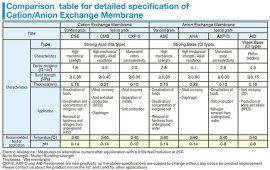danielfp248
Battery researcher
- Joined
- Sep 7, 2020
- Messages
- 429
A v2.0 version, nice, and the 200mA (not 200mV) gives room for greater flexibility, so thanks for the information - wonderful
. Will look it over.
I see, then by that fact, degassing dissolved oxygen (DO) also make sense since cyclability is greatly dependant upon a low amount of DO. Nitrogen is fairly easy to get a hold of, so a nitrogen rich environment or partial vacuum, shouldn't be too difficult either. But yes ofc I am thinking about the 1000 litre tanks already, even if its years away. There is always time to test and develop.. So thanks for the oxygen info, nice bit of info to have moving forward. One could make low O2 content or vacuum monitoring a feature of the anolyte to maintain the longest lifespan as possible.
Another good tip is that the normal form of Fe-EDDHA, which is (Fe(EDDHA))-1 is a deep red color while the reduced form, (Fe(EDDHA))-2 is colorless. Only a battery full or close to full will start to fade in red color. Sadly the color is so strong that it is not very useful to determine charge state directly, because even a very tiny amount of the oxidized form will make the solution ultra red.
However it is an excellent tool to determine if your solution is indeed isolated from oxygen.
Also, vaccum is not a good idea, because it is energy intensive and creates negative pressure which ensures any leaks will cause oxygen to come in. You need to have a good purge of the system with nitrogen first and then leave it under a slight positive nitrogen pressure, to ensure any leaks cause nitrogen to push out but not oxygen to come in.




